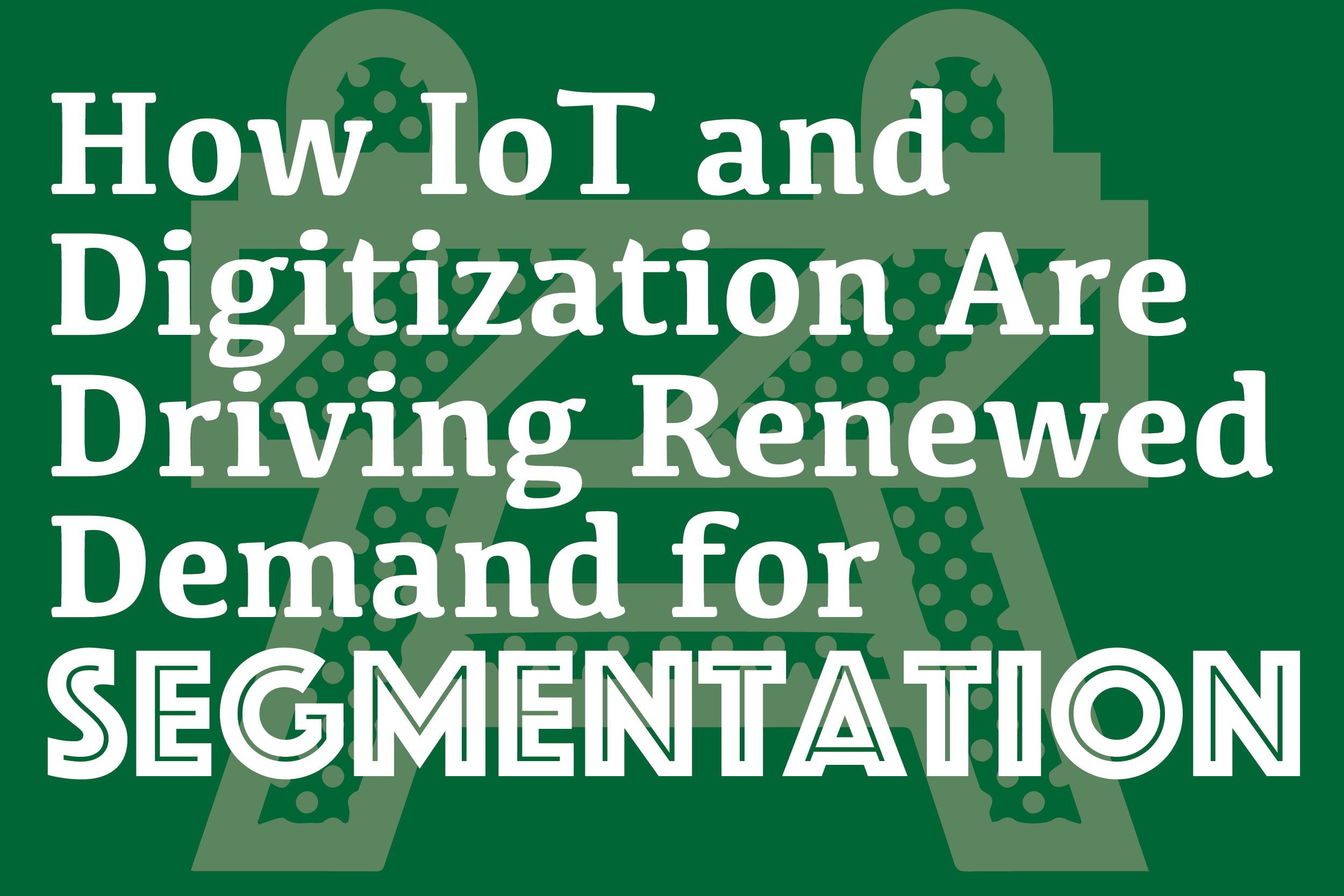July 11, 2018
How IoT and Digitization Are Driving Renewed Demand for Segmentation
Written by
TrustedSec
IoT Security Assessment
Operational Performance Maturity Assessment
Penetration Testing
Program Assessment & Compliance
Program Maturity Assessment
Security Program Assessment
Security Program Management
Security Testing & Analysis

 Background
The idea of Segmentation is pretty simple: put your crown jewels (i.e. your highest risk assets) in a small container, then heavily secure and monitor that. It is simply too difficult to secure everything equally.
Why Now?
With “digital” drivers to improve experiences, automate operations or change business models, there is now a need to manage data, systems, devices, people, and things from all over the globe. Even if you owned everything, you simply can’t physically get them centralized (into a data center for example) anymore. It’s becoming unmanageable.
Why Does the CEO or Board Care?
Generally, the reason we are seeing that they care is because it is regulation-based. The primary control for virtually every regulation or framework is to segment, for all of the reasons stated above.
Why Would a Line of Business Care?
Digitization requires speed: fast execution. Speed and exponential change often means that processes need to be altered and rules need to be bent or broken. This is a heyday for attackers. Say you are the Chief Marketing Officer and you want to test out a new concept store and integrate new data sources to improve the customer experience. Wouldn’t it be nice to have that contained so it didn’t take six months to get through all of the exceptions needed for IT because it’s a connected system and therefore an increased risk to the entire business? Segmentation gives you the ability to reduce the risk exposure to just a single area.
Why Does IT Care?
Segmentation reduces the attack surface. That means there are fewer places you have to look, and you can do that on a risk-based approach (i.e. focus on mission critical first, business important second, etc.). This reduces the number of people you need (which is a huge issue), the number of systems, and allows you to have one policy and one management across the organization. Studies show (and our experience corroborates) that this reduces costs in the order of 3:1, and more importantly reduces the probability of a full compromise from 75% to 17%.
What’s New in Technology in This Area?
Because of the complexity, this must be done in a software-based method where feasible so you can now secure across enclaves or planes (i.e. you can secure all medical devices across all locations in a hospital vs. dealing with the rest of the lower risk assets, or you can allow Industrial IoT Devices to only talk to other IoT Devices).
What Are the Goals of Understanding the Current State of Segmentation?
Background
The idea of Segmentation is pretty simple: put your crown jewels (i.e. your highest risk assets) in a small container, then heavily secure and monitor that. It is simply too difficult to secure everything equally.
Why Now?
With “digital” drivers to improve experiences, automate operations or change business models, there is now a need to manage data, systems, devices, people, and things from all over the globe. Even if you owned everything, you simply can’t physically get them centralized (into a data center for example) anymore. It’s becoming unmanageable.
Why Does the CEO or Board Care?
Generally, the reason we are seeing that they care is because it is regulation-based. The primary control for virtually every regulation or framework is to segment, for all of the reasons stated above.
Why Would a Line of Business Care?
Digitization requires speed: fast execution. Speed and exponential change often means that processes need to be altered and rules need to be bent or broken. This is a heyday for attackers. Say you are the Chief Marketing Officer and you want to test out a new concept store and integrate new data sources to improve the customer experience. Wouldn’t it be nice to have that contained so it didn’t take six months to get through all of the exceptions needed for IT because it’s a connected system and therefore an increased risk to the entire business? Segmentation gives you the ability to reduce the risk exposure to just a single area.
Why Does IT Care?
Segmentation reduces the attack surface. That means there are fewer places you have to look, and you can do that on a risk-based approach (i.e. focus on mission critical first, business important second, etc.). This reduces the number of people you need (which is a huge issue), the number of systems, and allows you to have one policy and one management across the organization. Studies show (and our experience corroborates) that this reduces costs in the order of 3:1, and more importantly reduces the probability of a full compromise from 75% to 17%.
What’s New in Technology in This Area?
Because of the complexity, this must be done in a software-based method where feasible so you can now secure across enclaves or planes (i.e. you can secure all medical devices across all locations in a hospital vs. dealing with the rest of the lower risk assets, or you can allow Industrial IoT Devices to only talk to other IoT Devices).
What Are the Goals of Understanding the Current State of Segmentation? - To provide independent verification, ensuring that current environments meet the organization’s security expectations and requirements.
- To analyze each business network separation through interviews, documentation, testing, and observation.
- To educate technical and portfolio ownership on the current security posture in relation to industry best practices around segmentation and how to appropriately apply them within the organization.
- To advise the organization on the potential impact of connected and non-separated business networks.
- Companies that are doing M&A.. This can be used for acquiring and divesting. The ability to quickly move or section off groups from your network improves the speed of the transaction.
- Healthcare with medical devices. With ransomware, there is true fear of hackers disrupting critical care, and most of the devices are un-patchable.
- Manufacturers that are bringing Operations Technology groups online. This enables policy enforcement on the OT infrastructure.
- Anything with IoT because (according to a Cisco study), 92% of the devices delivered have known vulnerabilities.
- A line of business that wants to be in control of their own processes/environments, without having to be slowed down by the rest of IT.
